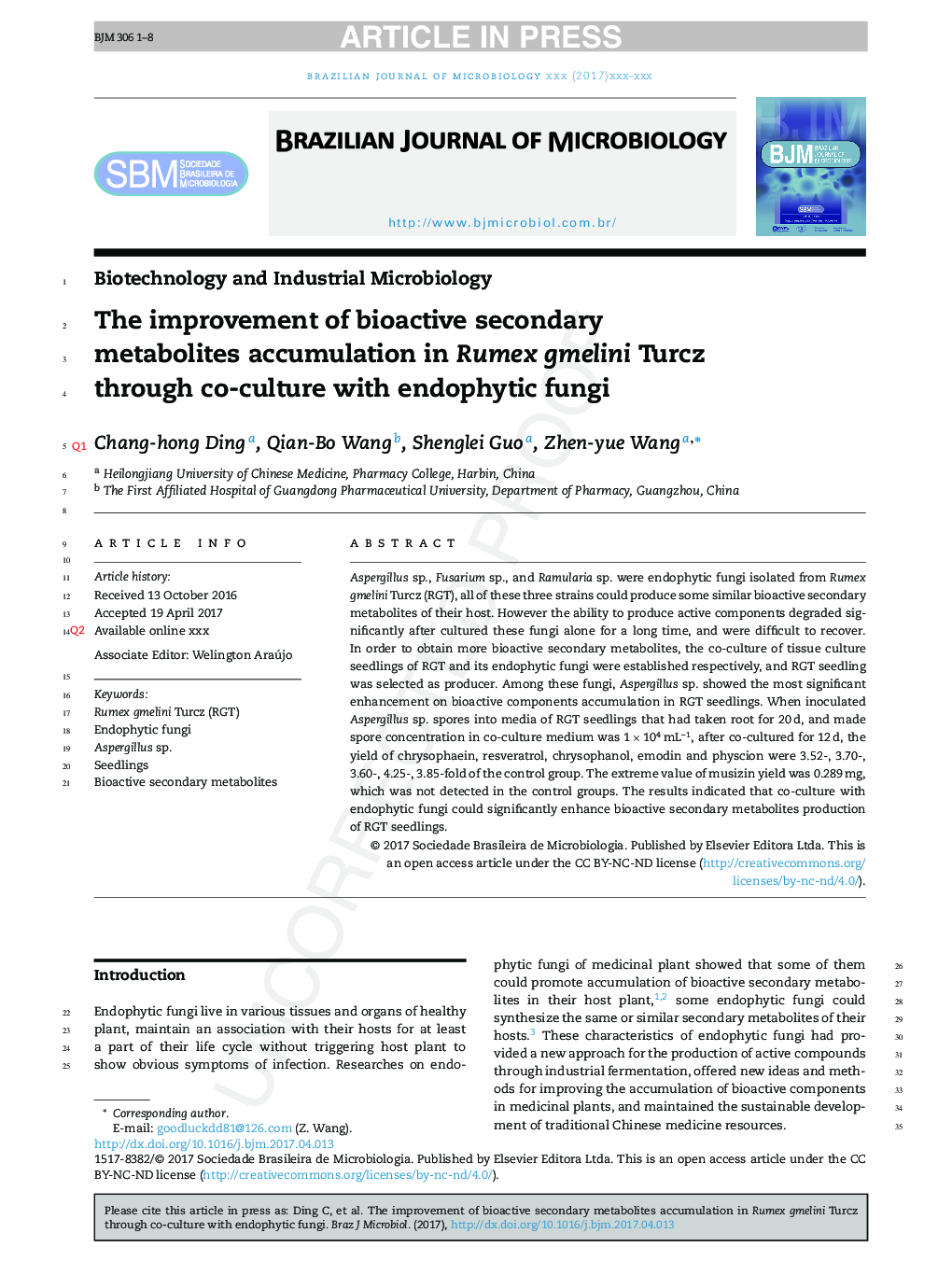| Article ID | Journal | Published Year | Pages | File Type |
|---|---|---|---|---|
| 8842515 | Brazilian Journal of Microbiology | 2018 | 8 Pages |
Abstract
Aspergillus sp., Fusarium sp., and Ramularia sp. were endophytic fungi isolated from Rumex gmelini Turcz (RGT), all of these three strains could produce some similar bioactive secondary metabolites of their host. However the ability to produce active components degraded significantly after cultured these fungi alone for a long time, and were difficult to recover. In order to obtain more bioactive secondary metabolites, the co-culture of tissue culture seedlings of RGT and its endophytic fungi were established respectively, and RGT seedling was selected as producer. Among these fungi, Aspergillus sp. showed the most significant enhancement on bioactive components accumulation in RGT seedlings. When inoculated Aspergillus sp. spores into media of RGT seedlings that had taken root for 20Â d, and made spore concentration in co-culture medium was 1Â ÃÂ 104Â mL-1, after co-cultured for 12Â d, the yield of chrysophaein, resveratrol, chrysophanol, emodin and physcion were 3.52-, 3.70-, 3.60-, 4.25-, 3.85-fold of the control group. The extreme value of musizin yield was 0.289Â mg, which was not detected in the control groups. The results indicated that co-culture with endophytic fungi could significantly enhance bioactive secondary metabolites production of RGT seedlings.
Related Topics
Life Sciences
Immunology and Microbiology
Applied Microbiology and Biotechnology
Authors
Chang-hong Ding, Qian-Bo Wang, Shenglei Guo, Zhen-yue Wang,
